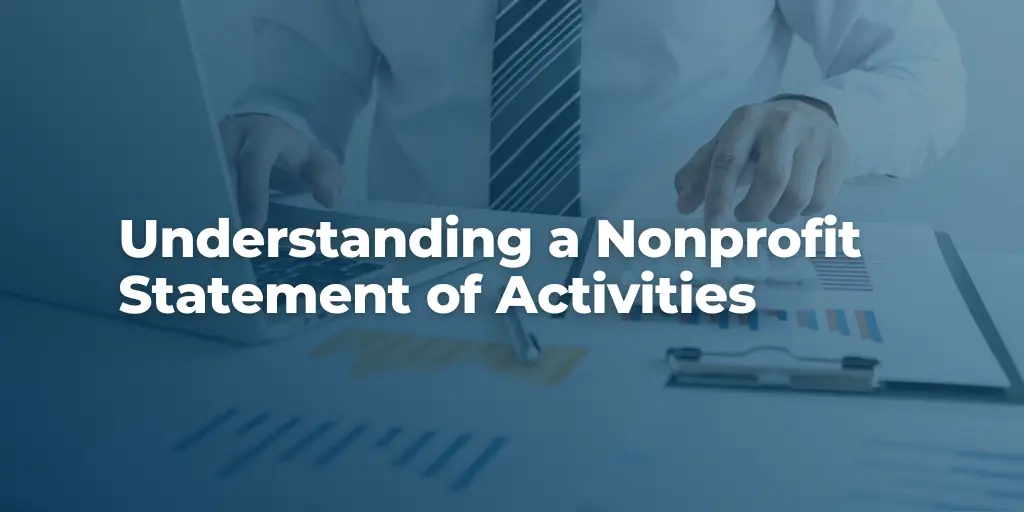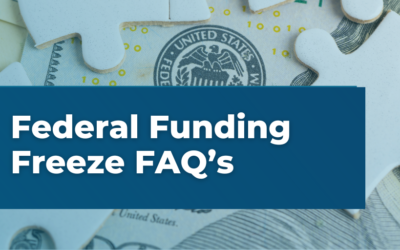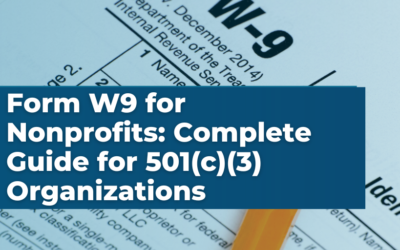As an Executive Director, it’s crucial to understand your nonprofit’s finances. This knowledge helps you achieve a positive bottom line and stay transparent with the people who support you. A critical tool in achieving both of these things is the Statement of Activities.
In this article, we’re going to break down the Statement of Activities and explain how to create one for your nonprofit. We’ll also tackle some frequently asked questions. By the end, you’ll have a clear understanding of how it can help you manage your nonprofit’s finances better.
What is a Statement of Activities?
The Statement of Activities is the nonprofit world’s version of an Income Statement or Profit and Loss Statement. It records tax implications, cash inflow from donations, and cash outflow from operating expenses. It’s one of four key financial statements required by the Generally Accepted Accounting Principles for Nonprofits (GAAP). The others include:
- The Balance Sheet (or Statement of Financial Position)
- Cash Flow Statement
- Statement of Functional Expenses
Why the Statement of Activities is Important
The Statement of Activities shows where your income comes from and how you spend that income. It enables regular financial check-ins, with your board reviewing the statement to ensure ongoing financial health.
It also breaks down expenditures on various activities, highlights how funds are allocated between projects, fundraising, and administrative tasks, and indicates whether these funds are earmarked for specific uses. This transparency and detailed accounting are vital for maintaining trust with donors, fulfilling regulatory requirements, and guiding strategic financial decisions.
What does a Statement of Activities Include?
The Statement of Activities includes two main categories: revenue and expenses.
Revenue includes cash inflow such as donations, grants, membership dues, and income from services or products offered by your nonprofit. Expenses, representing the cost of goods sold and operating expenses, are the costs your nonprofit incurs during its business operations, including program delivery and fundraising activities.
Revenue
This section details the fundraising, donations, grants, program service fees, membership dues, and investment income. By categorizing revenue types, you can easily gain insights into the different funding sources.
Donations and Contributions
Donations and contributions include funds or assets given to your nonprofit by individuals, corporations, foundations, or other organizations. These contributions can come as cash, securities, property, or in-kind donations. They play a vital role in supporting your nonprofit’s activities and programs.
Grant Income
Grant income comes from funds given by government agencies, foundations, other nonprofits, or grant-making entities. These funds support specific projects or initiatives. Grants and federal funding usually have rules on how you can use the money.
Earned Revenue
Earned revenue is money that your nonprofit collects from program service fees, membership dues, and special event income. This revenue is usually associated with programs or services that directly fulfill your organization’s mission. It can include charges for educational workshops, training sessions, counseling services, or other direct program-related activities as well.
Expenses
Expenses represent the costs incurred by your nonprofit in carrying out its activities and operations.
Program Expenses
Program expenses represent the direct costs associated with delivering your nonprofit’s mission-related programs and services. This section highlights the resources allocated to fulfill your nonprofit’s activities, such as salaries, program materials, and direct program-related expenses.
Supporting Expenses
Supporting expenses encompass administrative and general costs necessary to keep your nonprofit running smoothly. Examples include rent, utilities, office supplies, salaries of non-program staff, and professional fees.
Fundraising Expenses
Fundraising expenses cover the costs incurred to raise funds for your nonprofit’s operations and programs. It includes expenses associated with events, marketing, solicitations, and donor management systems.
To help you grasp the concept, let’s consider a hypothetical nonprofit organization. Here’s an example of what their Statement of Activities might look like.
How Can You Use a Statement of Activities?
Using a Statement of Activities can significantly benefit your nonprofit in several ways:
- Evaluate Financial Health: The Statement of Activities shows whether your income covers your costs. This insight is crucial for managing cash flow from operations, guiding strategic adjustments for better financial sustainability.
- Understand Funding: With the Statement, you can see where your funding comes from. This knowledge helps you focus your fundraising efforts more effectively and plan your finances smarter.
- Show Transparency: Sharing this statement proves to donors, board members, and others that you’re open about how you use funds. This builds trust and supports your reputation for being responsible.
- Guide Decisions: The financial data in the statement aids in making big decisions. It helps in budgeting, planning programs, and deciding where to spend money to best support your mission.
- Meet Reporting Needs: Grantmakers and donors often require this document in the reporting process. A clear and correct statement shows you’re following rules and being accountable.
- Support Funding Requests: When asking for grants or other support, this document can show you’re a good investment. It details your finances, showing potential supporters how you’ll use their funds.
- Spot Trends: Your Statement of Activities reveals trends in your finances, helping improve your financial strategy.
- Engage Stakeholders: It’s a great tool to involve everyone connected to your nonprofit. Clear financial information can help everyone understand and support your financial goals and mission.
This document is more than a simple financial summary. Regularly reviewing this and other financial statements will help you make well-informed decisions.
Tips for Improving Financial Transparency and Accountability
Financial transparency and accountability are vital for nonprofit organizations to build trust with stakeholders, maintain compliance, and demonstrate responsible stewardship of resources. Here are some key tips to enhance financial transparency and accountability within your nonprofit:
- Simplify Financial Reports: Make sure your financial statements are accurate, straightforward, and easy to understand. Avoid complex jargon, so everyone, regardless of their accounting know-how, can grasp the information.
- Train Your Team: Provide financial training for board members and staff involved in handling finances. This boosts their ability to engage with financial reports meaningfully and contribute to discussions.
- Implement Internal Controls: Set up strong checks and balances to protect assets, prevent fraud, and ensure accurate reporting. This might include dividing financial responsibilities, regular audits, and keeping detailed records.
- Independent Audits: An external audit adds credibility by giving an unbiased view of your financial health.
- Publish Annual Reports: Share annual summaries of your achievements, financial health, and community impact. This shows stakeholders the value of their support and the effectiveness of your programs.
- Use Technology: Leverage accounting software to accurately track cash and cash equivalents, enhancing financial transparency and efficiency in reporting.
- Follow Financial Policies: Develop and stick to clear financial guidelines for budgeting, spending, and other financial activities. Consistency in these practices ensures accountability across your organization.
Frequently Asked Questions
What is the difference between a Statement of Activities and a Statement of Financial Position?
The Statement of Activities tracks your nonprofit’s income and expenses, showing financial performance over time. The Statement of Financial Position, or Balance Sheet, shows what your nonprofit owns and owes at a specific moment. Think of it as a financial photo, showing your assets, debts, and overall net worth.
How often should a nonprofit prepare a Statement of Activities?
Nonprofits typically prepare their final Statement of Activities annually as part of their audit or review and make it publicly available. However, organizations should generate it internally more often, such as monthly or quarterly, to monitor financial performance more closely.
Can I create a Statement of Activities using accounting software?
Yes, many accounting software platforms have built-in templates and features to generate financial statements automatically. These tools can streamline the process and ensure accuracy in your financial reporting. We recommend Quickbooks as our preferred accounting software.
Are there any specific guidelines or standards for preparing a Statement of Activities?
Yes, nonprofit organizations must follow the Generally Accepted Accounting Principles (GAAP). The Financial Accounting Standards Board (FASB) Accounting Standards Codification (ASC) Topic 958 is another set of principles often used. These standards provide guidelines for proper financial reporting, including the preparation of the Statement of Activities.
What if my nonprofit has multiple programs or projects? How do I categorize them in the Statement of Activities?
If your nonprofit operates multiple programs or projects, it is important to allocate your expenses and revenues accordingly. For effective accounting period review, allocate revenues and expenses in separate columns to accurately assess the financial performance of each program or service. This allows you to track and assess the financial performance of each initiative separately.
Can I include non-cash items in the Statement of Activities?
Yes, you can add non-cash items like donated goods or services to the Statement of Activities. If they matter to your nonprofit’s finances, record them at their real value. This helps give a fuller picture of your financial situation.
How can I interpret the surplus or deficit indicated in the Statement of Activities?
The surplus or deficit in the Statement of Activities shows if your nonprofit made or lost money over a certain time. A surplus means you earned more than you spent, increasing your net assets. A deficit means you spent more than you earned, reducing your net assets.
Can the Statement of Activities be useful for budgeting purposes?
Yes, the Statement of Activities can provide valuable insights for budgeting. You can identify trends, assess the effectiveness of revenue sources, and make informed projections for future periods. This helps you develop realistic budgets and allocate resources strategically to achieve your nonprofit’s goals.
Is the Statement of Activities the only financial statement I need for my nonprofit?
No, the Statement of Activities is one of several essential financial statements for nonprofits. You should also prepare a Statement of Financial Position (Balance Sheet) and a Statement of Cash Flow. These statements collectively provide a comprehensive overview of your nonprofit’s financial position, performance, and cash flow.
Understanding and effectively utilizing the Statement of Activities is crucial for nonprofit organizations to achieve financial stability and fulfill their mission. If you need help or have any other accounting concerns, book a free consultation with a Velu CPA expert today. Our dedicated team is here to support you in managing your nonprofit’s finances and achieving long-term sustainability.





